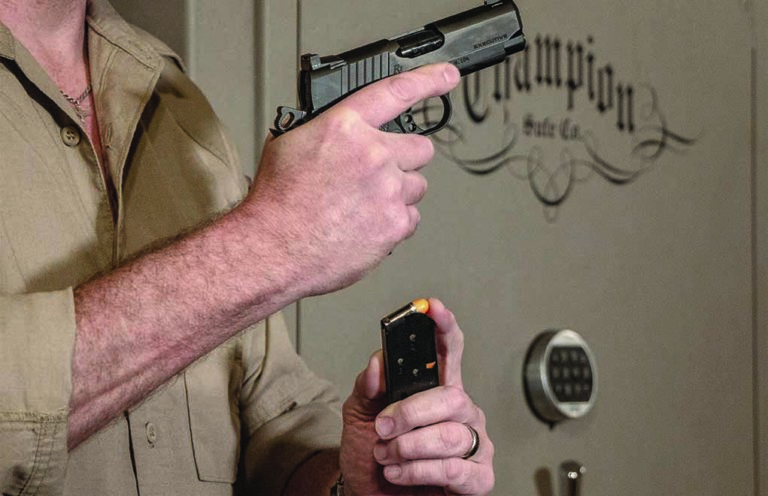

Lack of range time is no excuse for gathering rust. Here's the dry fire training that will keep your defensive handgun skills sharp as a tack.
What Are The Dry Fire Traing You Should Focus On:
Dry fire training involves working with a firearm that’s unloaded. Admittedly, messing with unloaded guns has limited appeal; it’s like playing with a motorcycle with an empty gas tank.
However, the goal with dry practice is to become more familiar with the gun and develop a relationship with its trigger, sights, controls, operation and presentation. Dry fire training can cover several aspects of gun handling; it’s not just about pulling the trigger.
Even if you consider yourself an average shooter, I’d urge you to become devoted to dry practice. I’ve been shooting most of my life, and hardly a day goes by that I don’t dry practice in some manner.
Presented here are several dry fire drills, along with dos and don’ts. The number-one most important aspect of dry fire training is to always work with a for-damned-sure unloaded gun, no matter what type of dry practice you’re conducting. I’d also recommend you conduct dry practice in a location where there’s no live ammunition. Remember: always, always, point your handgun in a safe direction!
Trigger-Pull
Pulling triggers or “dry-firing” is the most common form of dry practice—and rightly so. As the late, great Jeff Cooper said, “The purpose of shooting is hitting.” And hitting comes about by you being able to maintain a proper sight picture while pressing the trigger. In fact, if you could boil the secret to shooting down to two concepts, it’s sight alignment and trigger control.
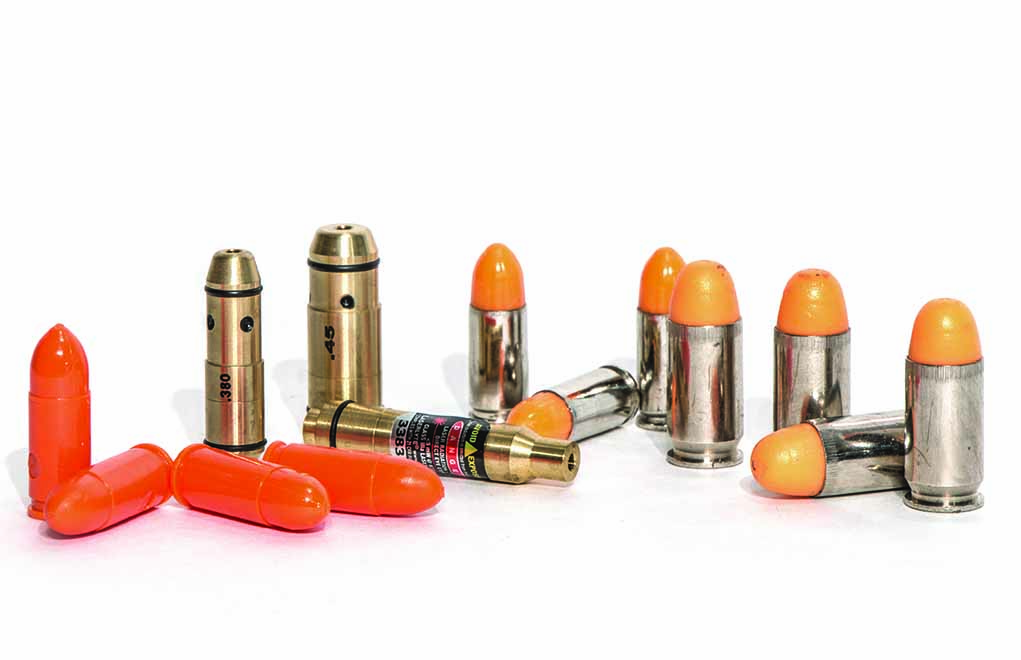
The trigger press—with the proper sight alignment—should be a part of your presentation dry fire training, but it can also be done independently. The worse the trigger in your firearm, the more of this you’ll need to do. Building a relationship with a bad trigger is like doing the same with an ornery co-worker: It takes time and patience.
As with any other form of practice, start slowly in order to develop a relationship with your trigger. Use a small aiming point so you can notice any wobble or jerk as the trigger’s pressed. If you can connect a laser to your handgun, these wobbles or jerks are much easier to see. Some folks even rest a dime or penny on the barrel of the gun and attempt to press the trigger without allowing the coin to hit the floor.
With handguns, you can even use a pencil. Insert the pencil in the barrel with the sharpened end toward the target. Tape a piece of paper on the wall with a small aiming point and aim at that point with the muzzle about an inch from the wall. When you press the trigger, the firing pin will hit the eraser and force the pencil out of the barrel. The sharpened end will hit the paper and create a mark. You can do this over and over and even shoot a group.
Do use snap caps. They’re a great accessory for dry fire training; they save wear on your gun; and they add a visual indication that the gun is unloaded.
Don’t focus on the target. Your attention should always be on the front sight or reticle.
Firearms Presentation
Firearms presentation is generally thought to apply only to handguns. Presenting a handgun or getting it out of the holster and orientating it toward the target is a skill that needs to be practiced. But so, too, is bringing a rifle to your shoulder so that it’s pointed at the target. Firearms presentation, whether with a handgun, rifle or shotgun, is one of the least practiced—but most important—aspects of dry fire training.
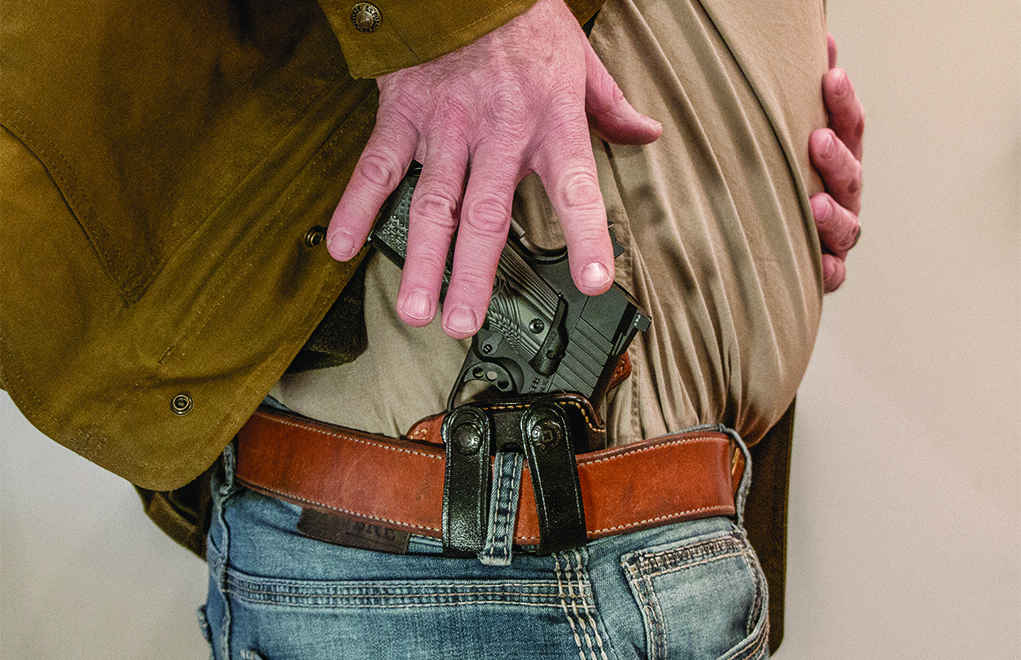
When practicing presentation, it’s best (at least, initially) to do it in steps. As you perform each step of the process, take careful pains to make sure you’re executing the action to perfection. For example, if you’re practicing your draw from concealment, make sure you’re wearing a concealing garment that you must clear. By the same token, if you’re working on shouldering a hunting rifle or shotgun, it might be a good idea to be wearing your hunting jacket.
Do practice from the initial movement all the way through the trigger press and follow-through.
Don’t rush the process. Start slow—crawl, walk, run.
Get On Target With More Handgun Training:
- Video: Target Transition Training With The Dot Drill
- The Shot Timer And Defensive Handgun Training
- Gun Digest’s 10 Best Shooting Drills And Firearms Training Posts
- MantisX: Simple And Effective Training
- Video: Is A Full-Sized Pistol The Best Training Option?
Follow-Through And Holstering
Firearms instructors commonly tell me one of the skills that’s most lacking in their students is the follow-through and holstering. Not only do shooters tend to ignore proper form when doing this, it’s also an area in which they tend to become very unsafe.

Celebrations or actions of disgust occur frequently on the range and in the field. The elation of a hit or dissatisfaction of a miss can override our safety valve, and guns end up being pointed in directions they’re not supposed to. Establishing proper follow-through and holstering habits with dry fire training will not only make you safer, it will also make you a better shooter.
There are several aspects to consider here:
When the trigger breaks, focus on maintaining your sight picture. Then, you can focus on putting away the gun. However, with a long gun, this is the time when you might need to cycle the action—run the bolt, work the pump or rack the lever. This should be done before the long gun leaves your shoulder. The final step is to holster the handgun or lower the long gun to a proper “ready” position.
Do conduct the proper follow-through every time you conduct a dry fire training trigger press.
Don’t ever be in a hurry to holster a handgun.
Reloading
Competition shooters have been dry fire training the reload for many years. And, they often use a shot timer to gauge their proficiency. This is fine but, of course, not all of us are competition shooters. However, that doesn’t mean we shouldn’t be practicing reloading our firearms.
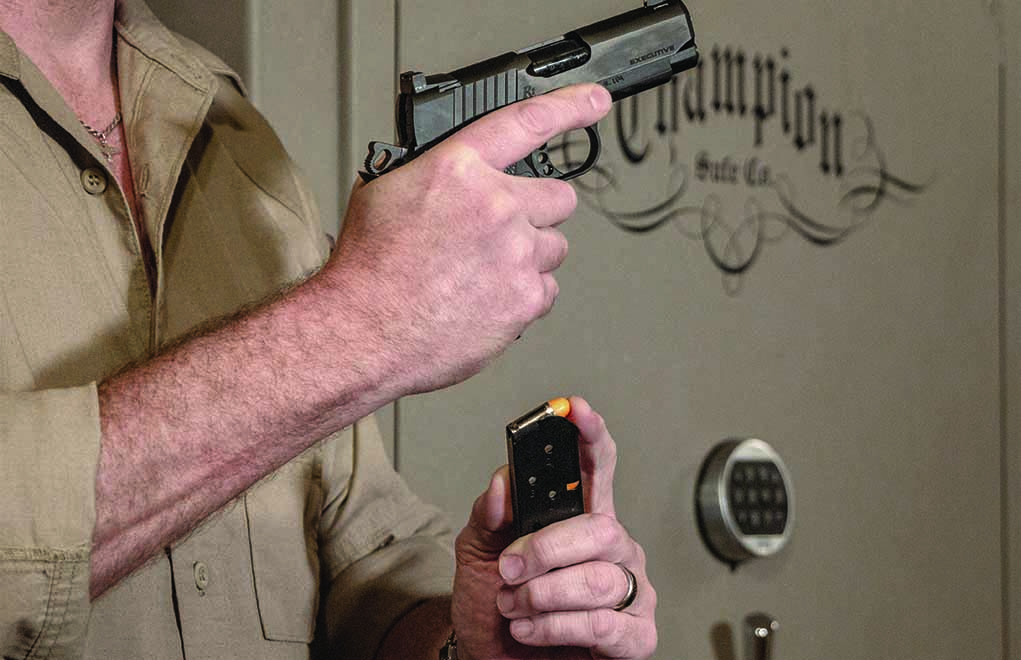
Regardless of the weapon system you’re operating, there are several generally accepted methods for reloading it. It might be as simple as replacing a magazine or as complicated as topping off a bolt-action or lever-action rifle.
Whatever the process, it can be easily dry practiced. After a dry practice trigger press, conduct the reload and pay particular attention to doing each step correctly. For example, if you’re replacing the magazine in your handgun, don’t drop the magazine that’s in the gun to the ground until your hand has found the replacement magazine on your belt. Sure, you can run a shot timer to see how fast you can conduct a reload, but what’s more important here is that you learn to conduct the reload correctly. As they say: Bad practice equals bad performance.
Do concentrate on keeping the muzzle orientated in a safe direction and the target in your peripheral vision as you conduct a reload.
Don’t ever, ever use live ammunition for dry reloading practice. After all, dummy rounds are too affordable to ignore.
Immediate Action: Stoppages
Guns jam. All repeating firearms jam. Glocks jam, revolvers jam, lever-actions jam and yes, even the celebrated Mauser-style bolt-action rifle will jam.
What you can do with dry fire training is simulate various types of stoppages and then work the proper techniques to clear them. Being fluent with these techniques could potentially save your life in a gunfight with a bad guy or a bad critter such as an African buffalo. It might also mean the difference in being able to get that trophy elk, sheep or whatever you might be after.
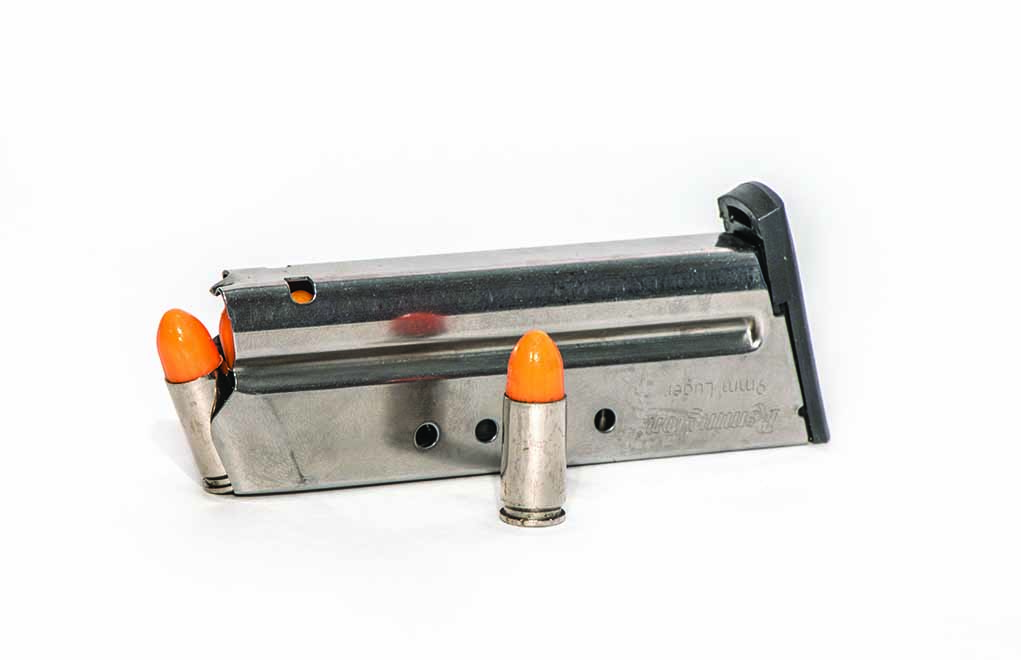
There are a couple of ways to practice immediate action. You can set up the stoppage yourself and then attempt to clear it. In fact, until you become at least moderately proficient with the process, this is the preferred method. Alternatively, you can let a buddy set up the stoppage while you’re not looking. This requires you to diagnose the situation and respond accordingly.
One thing to remember when performing immediate action or working with a stoppage, particularly with a firearm that feeds from a detachable magazine, is that sometimes the best—fastest—answer is to just conduct a reload.
Do use dummy rounds when practicing immediate action, and make sure you’ve practiced it multiple times before you ever try to do it in a hurry with live ammunition.
Don’t point your firearm in an unsafe direction when clearing a stoppage. Just because it seems to not be working doesn’t make it inert.
Frequency
How often should you conduct dry fire training? Well, that depends on how serious you are about shooting and how often you get to shoot live ammo. I generally do a little dry fire training every day. However, as a gun writer, I live around guns; there’s always one (or more) within reach for me to work with. That’s not the case with most folks, who have jobs at which they can’t just get their pistol out and go waving it around at lunch time.
The good thing about dry fire training is that the sessions don’t have to be long. In fact, frequency is more important than duration. If you can carve out five to 10 minutes every day or a least a few evenings a week to do a little dry practice—always away from the distraction of work or family—you’ll see a significant improvement in your shooting very soon.
The article originally appeared in the 2020 Concealed Carry issue of Gun Digest the Magazine.

Next Step: Get your FREE Printable Target Pack
Enhance your shooting precision with our 62 MOA Targets, perfect for rifles and handguns. Crafted in collaboration with Storm Tactical for accuracy and versatility.
Subscribe to the Gun Digest email newsletter and get your downloadable target pack sent straight to your inbox. Stay updated with the latest firearms info in the industry.

![Best Concealed Carry Guns In 2025 [Field Tested] Wilson Combat EDC X9S 1](https://gundigest.com/wp-content/uploads/Wilson-Combat-EDC-X9S-1-324x160.jpg)


![Best 9mm Carbine: Affordable PCCs [Tested] Ruger Carbine Shooting](https://gundigest.com/wp-content/uploads/Ruger-Carbine-Shooting-100x70.jpg)
![Best AR-15: Top Options Available Today [Field Tested] Harrington and Richardson PSA XM177E2 feature](https://gundigest.com/wp-content/uploads/Harrington-and-Richardson-PSA-XM177E2-feature-100x70.jpg)
